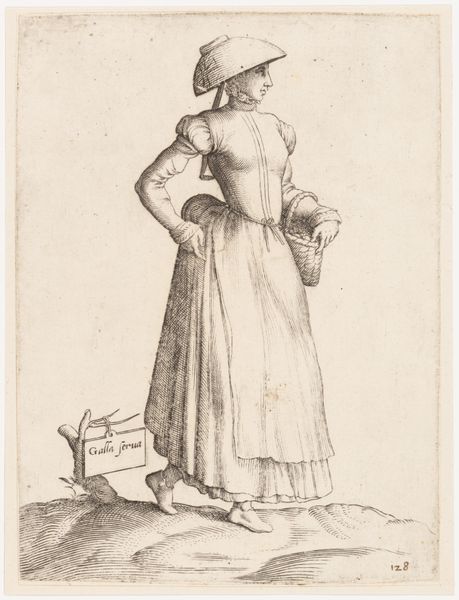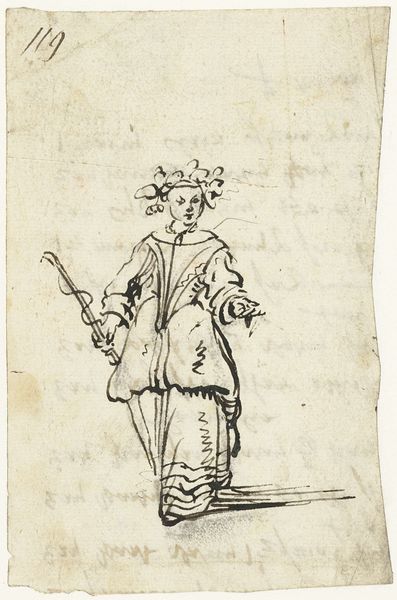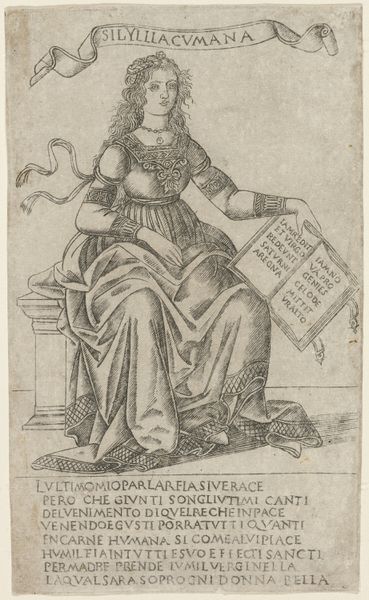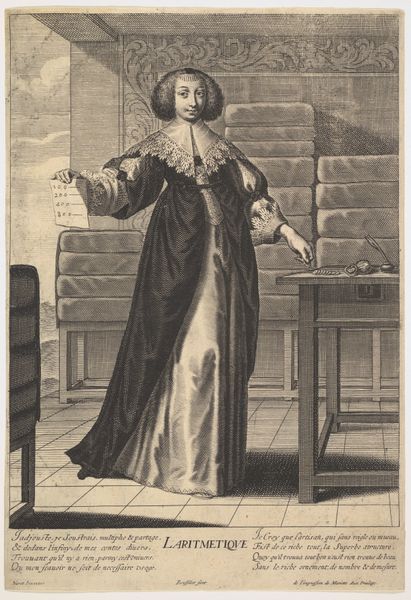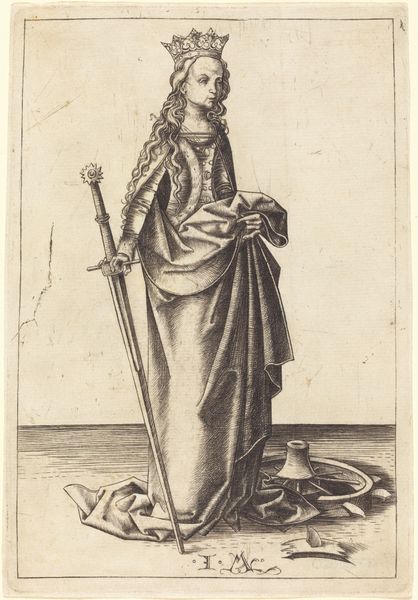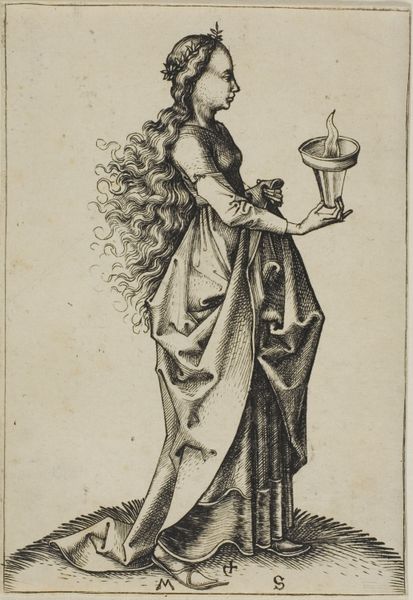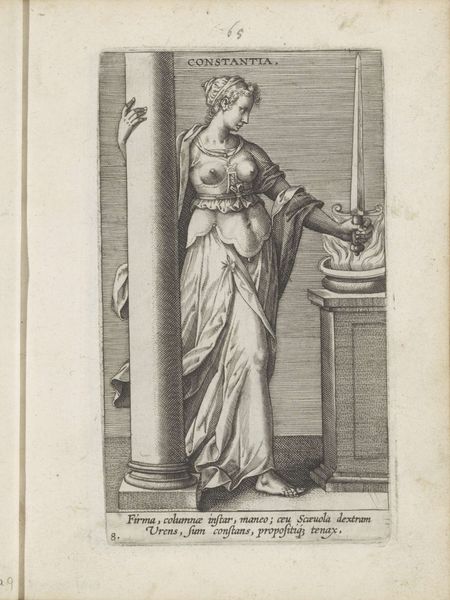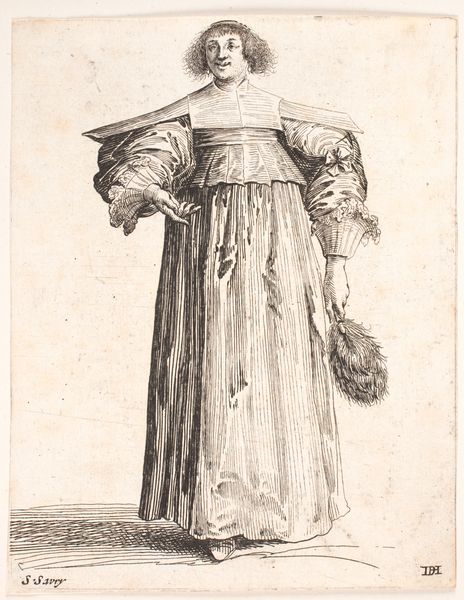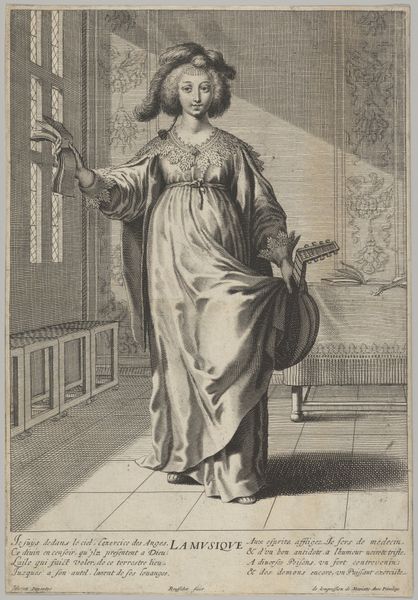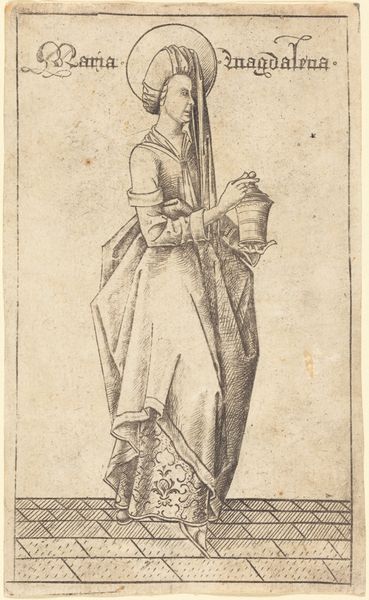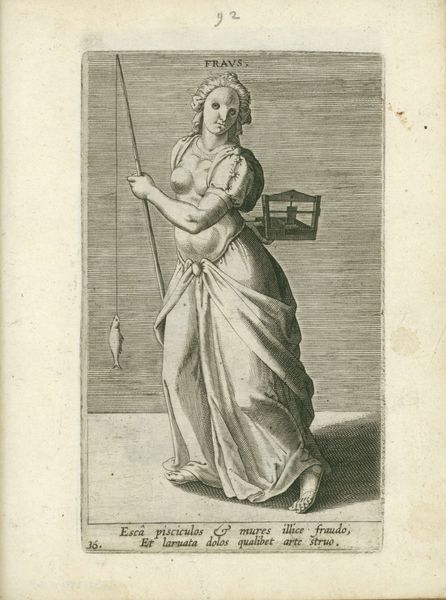
print, engraving
# print
#
figuration
#
line
#
history-painting
#
northern-renaissance
#
engraving
Dimensions: height 134 mm, width 82 mm
Copyright: Rijks Museum: Open Domain
Martin Schongauer created this engraving, "The Second Foolish Virgin," in Germany around 1480. Schongauer was the most important printmaker of his time in Europe, and this image demonstrates his technical skill. This print depicts a woman holding an oil lamp, a symbol of the parable of the ten virgins from the Gospel of Matthew. Five were wise and prepared for the bridegroom's arrival, while five were foolish and did not bring enough oil for their lamps. This image belongs to a series depicting those foolish virgins. The historical context is crucial. Religious images like this played a significant role in shaping the moral and spiritual lives of people in the late 15th century. They served as visual aids for religious instruction. Prints were relatively affordable and widely distributed. Schongauer's placement of his initials makes it an early example of art as the product of an individual genius. By studying the print alongside religious texts and social histories of the period, we can better understand the social conditions that shaped its production. It's in this dialogue between the artwork and its world that the fullest meaning emerges.
Comments
No comments
Be the first to comment and join the conversation on the ultimate creative platform.

